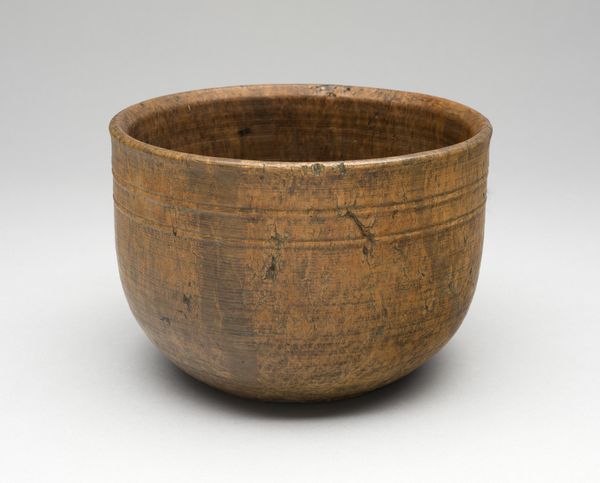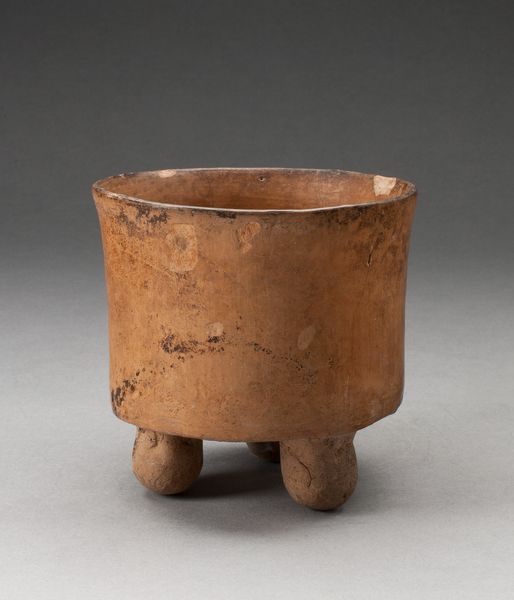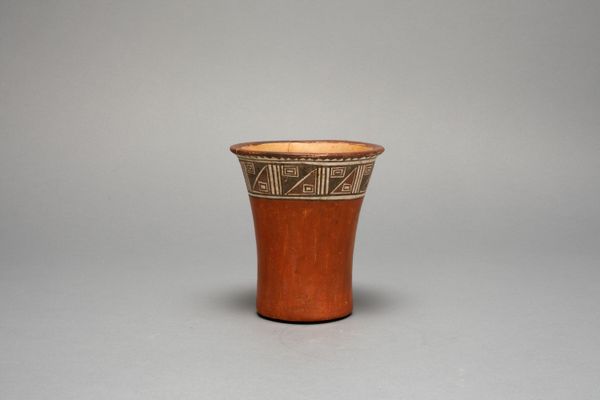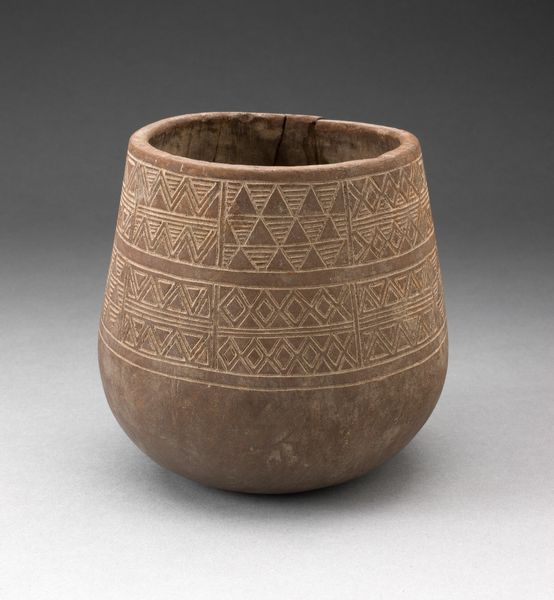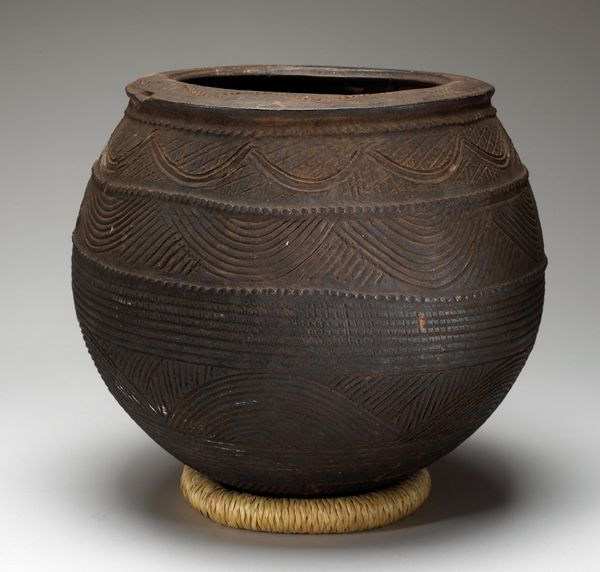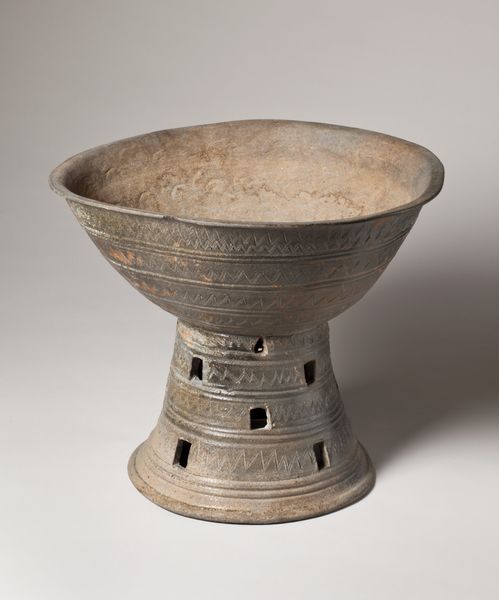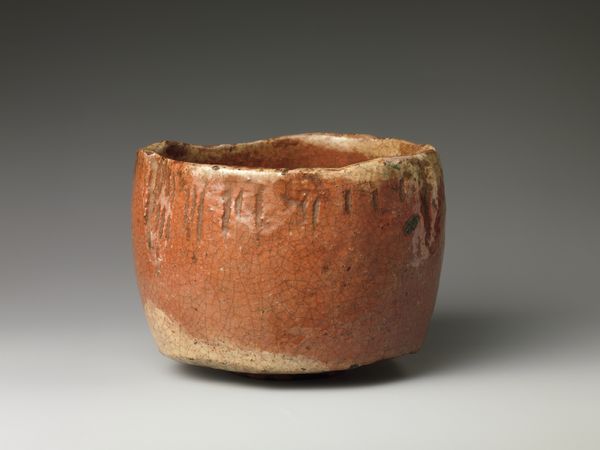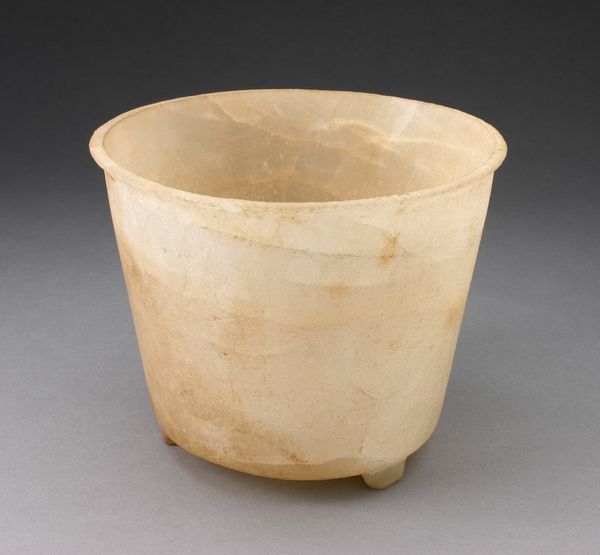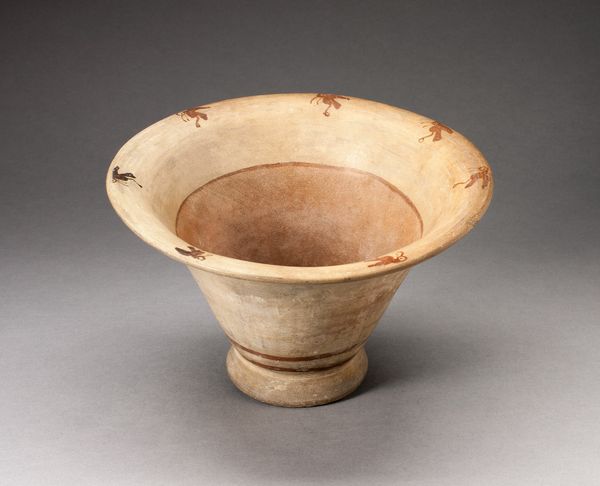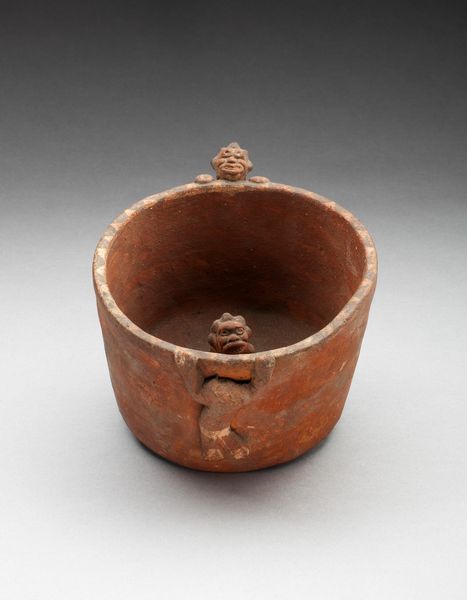
Drinking Vessel (Kero) with Incised Geometric Pattern Possibly 1450 - 1532
0:00
0:00
carving, wood
#
carving
#
geometric
#
ceramic
#
wood
#
indigenous-americas
Dimensions: 9.5 × 7.9 cm (3 3/4 × 3 1/8 in.)
Copyright: Public Domain
Editor: Here we have a drinking vessel, a kero, with incised geometric patterns, created by the Inca people sometime between 1450 and 1532. It appears to be made of carved wood and/or ceramic. Its simplicity is striking, yet I find it elegant. What do you see in this piece, from a materialist perspective? Curator: What immediately captures my attention is the interplay between the raw material, likely wood, and the labor involved in its transformation. Notice the subtle marks left by the carving tools. These aren’t imperfections, but rather evidence of the human hand – a direct link to the artisan and their process. This challenges any romantic notions of "high art" because we directly witness a type of physical work to create the art piece. Editor: So you are focusing on how it was made and by whom. Curator: Exactly! Think about the social context: this wasn’t mass-produced. This kero likely served a specific function, possibly within ritualistic or ceremonial contexts. Consider also what its materiality - maybe wood but possibly also ceramic - suggests about resources, trade routes, or even hierarchical structures. Where would the artisan get the materials? Who were the consumers of the piece? Editor: The patterns seem simple, but so purposefully etched into the piece. Do they bear any relation to what it's made of, and the tools used to carve them? Curator: I would imagine that they do: it suggests a deep, cultural awareness with geometric motifs becoming inextricably connected with the function of the vessel. Perhaps the act of consuming from a kero such as this, in a collective or perhaps solitary action, can then be construed as participation in a communal ethos of that society, or at least what it tried to communicate about that society! The physical object itself, a mundane yet functional container, communicates volumes about cultural expression, social hierarchy and perhaps more that we've yet to uncover! Editor: This materialist reading is completely new to me. Now I'll definitely look at artworks from this vantage point. Curator: Precisely! By grounding ourselves in the material conditions of art production, we challenge traditional hierarchies and understand that everyday items can communicate meaning.
Comments
No comments
Be the first to comment and join the conversation on the ultimate creative platform.


